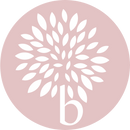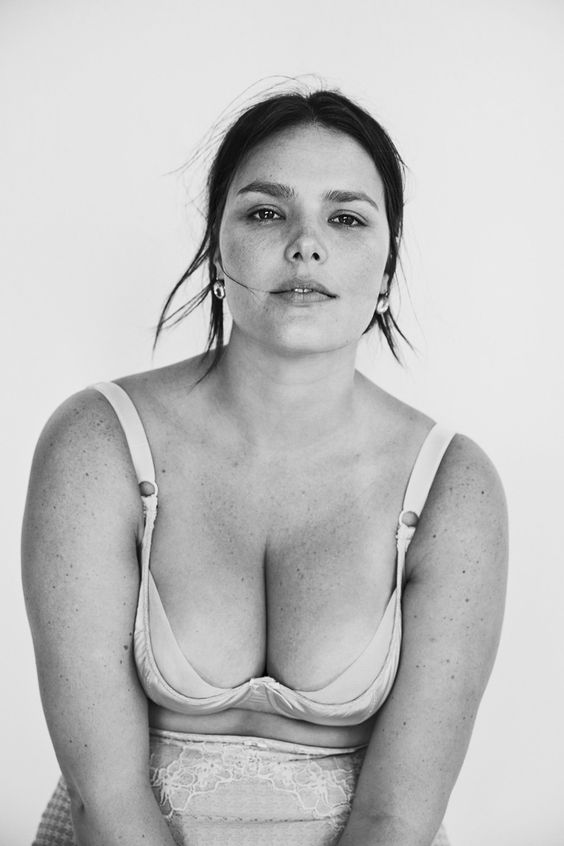After putting my daughter to bed one night, I lowered myself into the bath as usual and checked my breasts. Being a mother and having a family history of breast cancer, I naturally worry so I make sure I check regularly. On this occasion I felt a lump and my heart sank. It wasn't visible to the surface, I could just feel it.
I thought about ringing the doctor first thing in the morning but then I felt silly because what if there wasn’t a lump? Or as I'm young, would the doctors take me seriously?
I kept feeling it to reassure myself there was definitely a lump and a few days later I called the doctors.
I was taken seriously! I received a same day appointment. The doctor examined me, and could also feel the lump so she referred me to the breast clinic.
A few weeks later, I attended an appointment at the breast clinic. During the appointment a specialist examined me and asked me if I had any other symptoms. He felt the lump, drew a circle around it and sent me for an ultrasound.
Everyone was really nice and despite my worries, they took me seriously and were so helpful! The whole procedure was explained to me and I was put at ease.
During the ultrasound the lady scanned the lump and it was good news that the lump was breast tissue that had clumped together. I was told to frequently massage the area and the team explained that this was really common and nothing to worry about.
After this experience I was so glad that I made the initial phone call to my Doctor and would also go back straight away if in the future should any other changes be found.
It was important to me to inform my friends and family on the importance of getting lumps checked because as previously mentioned, if detected early there's a much higher survival rate.
As women, it is crucial that we check our breasts regularly and never feel like we are not going to not be heard or taken seriously. A concern for our health and breast health is never silly or embarrassing.
Don’t question it, don’t wait, just go and get it checked!
Breast Cancer Awareness Month
Breast Cancer awareness month happens every October from the 1st to the 31st.
During this month people all over the world come together to show their support for those affected by breast cancer. This could be as simple as wearing something pink, sharing an informative post, accompanying a friend or family member to a mammogram, or participating in a run or a walk.
This month is also about educating everybody on what breast cancer is, how you can thoroughly check for lumps or abnormalities, what to do if you have found changes and also remind women over the age of 50 to go to their regular mammograms.
What is Breast Cancer?
Breast cancer is the uncontrollable growth of malignant cells in the breasts. It’s the most common cancer in women, although it can also develop in men.
Most women diagnosed with breast cancer are over the age of 50, however younger women can also get breast cancer so it is equally as important for younger women to regularly check their breasts too.
On average, 1 in 8 women are diagnosed with breast cancer during their lifetime. It's vital that women regularly check their breasts as when detected at an early stage, there's a good chance of recovery!
As breast cancer also occurs in men it is also important to get your husbands, dad, uncles, sons etc. to check regularly as well.
The exact cause of breast cancer remains unknown, but some women have a higher risk than others. This includes women with a family history of breast cancer, women with certain gene mutations, women who began their menstrual cycle before the age of 12, and women who started menopause at an older age, or have never been pregnant.
Breast Cancer Types
There are several different types of breast cancer, which are often divided into either:
Non-invasive breast cancer This is found in the ducts of the breast which have not spread into the breast tissue surrounding the ducts.
How is non-invasive breast cancer detected? Non-invasive breast cancer is usually found during a mammogram and rarely shows as a breast lump.
Invasive breast cancer This is where the cancer cells have spread through the lining of the ducts into the surrounding breast tissue. This is the most common type of breast cancer.
Other, less common types of breast cancer include:
- Invasive (and pre-invasive) lobular breast cancer
- Inflammatory breast cancer
- Paget's disease of the breast
It's important to know that breast cancer can also spread to other parts of the body and blood.
This usually happens through the blood or the axillary lymph nodes. These are small lymphatic glands that filter bacteria and cells from the mammary gland. If this happens, it's known as secondary, or metastatic, breast cancer.
Checking regularly can minimise the risk of the cancer spreading.
How Breast Cancer is Diagnosed
You may be diagnosed with breast cancer after routine breast screening, or you may have symptoms that you've seen your GP about. If after an examination you need further assessment, you will be referred to a specialist breast cancer clinic
What will happen at the Breast Cancer Clinic?
After your examination, your doctor or nurse will tell you what tests you need.
For women under the age of 35, this will likely be an ultrasound. This is because younger women have dense breasts, which means a mammogram is not as effective as an ultrasound when detecting cancer.
Women over the age of 35 will likely be invited to have a mammogram, which is an X-ray of your breasts. You may also need an ultrasound scan too.
What is an ultrasound?
Ultrasound uses high-frequency sound waves to produce an image of the inside of your breasts, showing any lumps or abnormalities.
If an abnormality is found in your scan, or there is a lump that needs to be checked to see if it is solid or contains liquid. You will need further tests to determine if you have breast cancer.
You may have many of these tests on the same day as well as getting the results. But you might have to wait up to 2 weeks for some results.
Further tests could include:
- A biopsy - This is where a sample of cells is taken from your breast and tested to see if it's cancerous.
- Needle aspiration - This may be used to test a sample of your breast cells for cancer or drain a small fluid-filled lump (benign cyst). Your doctor will use a small needle to extract a sample of cells, without removing any tissue.
- Needle biopsy - A sample of tissue is taken from a lump in your breast using a large needle. You may have a local anaesthetic, which means you'll be awake during the procedure, but your breast will be numb.
- Vacuum-assisted biopsy - During the procedure, a needle is attached to a gentle suction tube, which helps to obtain the sample and clear any bleeding from the area.
What Happens after a Diagnosis Has Been Confirmed?
If a diagnosis of breast cancer is confirmed, more tests will be needed to determine the stage and grade of the cancer, and the best method of treatment.
These could include:
- Blood tests - You have a blood test to check your general health and how well your kidneys and liver are working.
- A CT scan, chest X-ray and liver ultrasound scan may be needed to check whether the cancer has spread.
- An MRI scan of the breast may be needed to clarify the results or assess the extent of the condition within the breast.
- If your doctor thinks the cancer could have spread to your bones, you may need a bone scan
How to Check your Breasts
Learning to check your breasts is so important! Checking your breasts should be done at home on a regular basis.
Get to know your breasts
Become familiar with how your breasts look and feel before, during and after your period. After a few months, you’ll see a pattern of what’s normal for you. Similar changes may also happen during menopause or breastfeeding.
Make checking your breasts part of your routine
Choose something you already do on a regular basis like having a shower, getting dressed, listening to a weekly podcast, or even just getting into bed. Then every time you do this activity, check your breasts.
Make a note of what you feel, and each time you check your breasts go back to this and check in case anything feels or looks different this time.
Don't be afraid if you feel something unusual. Not all lumps are cancerous. In fact, more often than not, there’s nothing to worry about but you should not ignore it. Write down your observations and then arrange an appointment with your doctor to get it checked out.
How to Check your Breasts at Home
- Stand in front of a mirror and become familiar with what your breasts look like from all angles. Take note of their size, pigmentation, appearance of the skin and the appearance of the nipple.
- Using four fingers and the flat of your hand, begin at the outer edge of the breast (nearest your chest) and work around in a full 360-degree circle. Keep pressing the breast in circular motions, noticing if any breast tissue feels different from the rest. Continue feeling around in circular motions, moving inwards, until you reach the nipple.
- Next, check your armpit, as breast tissue extends here. Raising one arm up above your head, use your four fingers (flat, just as before) and feel around the breast tissue. Repeat with your other armpit. Some women find this easier to do while lying down.
- Gently squeeze your nipple and check for discharge.
Signs and Symptoms of Breast Cancer
The first symptom of breast cancer that most women notice is a lump or an area of thickened tissue in their breast.
The 1 Photo Going Viral to Help Women Detect Breast with Cancer Picture:

You should see a GP if you notice any of the following:
- A new lump or area of thickened tissue in either breast that was not there before
- A change in the size or shape of one or both breasts
- Change on or around the nipple or discharge of fluid from either of your nipples
- A lump or swelling in either of your armpits
- A change in the look or feel of your skin, such as puckering or dimpling, a rash or redness
- ‘Orange peel’ - appearance of the skin caused by unusually enlarged pores.
- A rash, crusting, scaly or itchy skin or redness on or around your nipple
- A change in the appearance of your nipple, such as becoming sunken into your breast
- Swelling in your armpit or around your collarbone
- Constant pain in one part of your breast or armpit
Risk Factors
While there is no way to prevent the illness completely, there are a few lifestyle changes that can reduce your risk, which include:
- Limiting alcohol consumption
- Not smoking
- Getting active and exercising regularly
- Maintaining a healthy weight
- Being breast-aware; i.e. be familiar with your ‘normal’.
Key Takeaway
It is important that every woman learns how to identify the visible symptoms of breast cancer. Cancer can be aggressive and life-threatening, but with early diagnosis and treatment, the survival rate is high. According to the American Cancer Society, The five-year survival rate for breast cancer if diagnosed as stage 1 to stage 3 is between 100 percent and 72 percent. But once the cancer spreads to other parts of the body, the five-year survival rate drops to 22 percent.
You can improve your chances of early detection and treatment by:
- Maintaining a healthy lifestyle
- Developing a routine of conducting self-breast examinations
- Seeing your doctor if you notice any changes in your breasts
- Getting regular mammograms
Want to Know More?
- Breast Cancer Now: What to expect at a breast clinic appointment
- Cancer Research UK: diagnosing breast cancer
- Macmillan Cancer Support: how breast cancer in women is diagnosed
- Cancer Research UK: tests on breast cancer cells
- https://breastcancernow.org/about-us/media/facts-statistics



